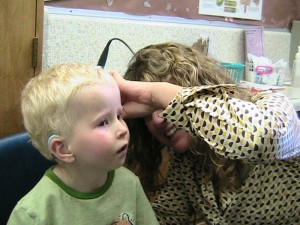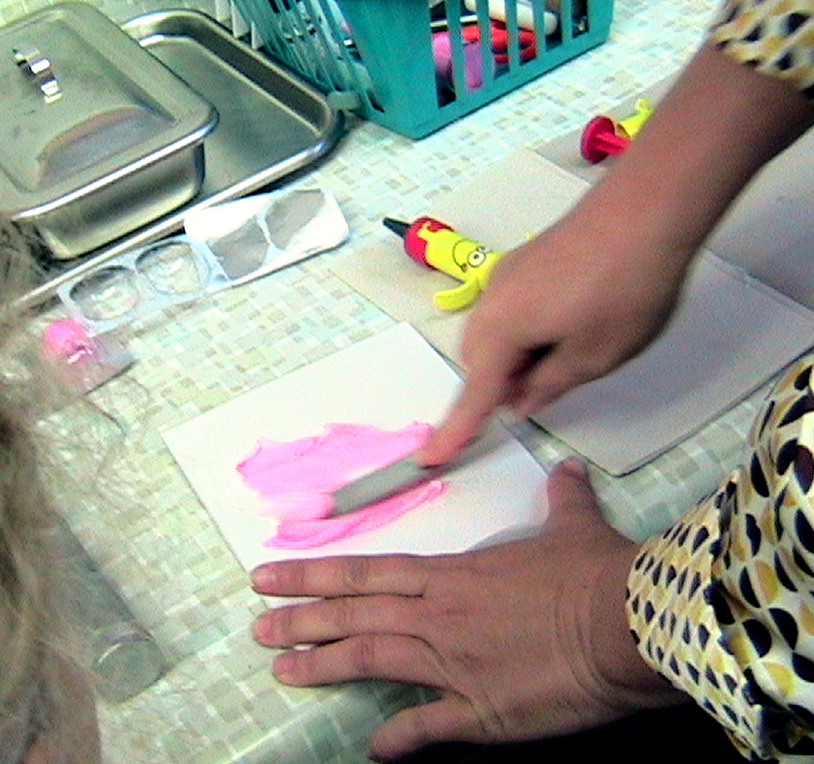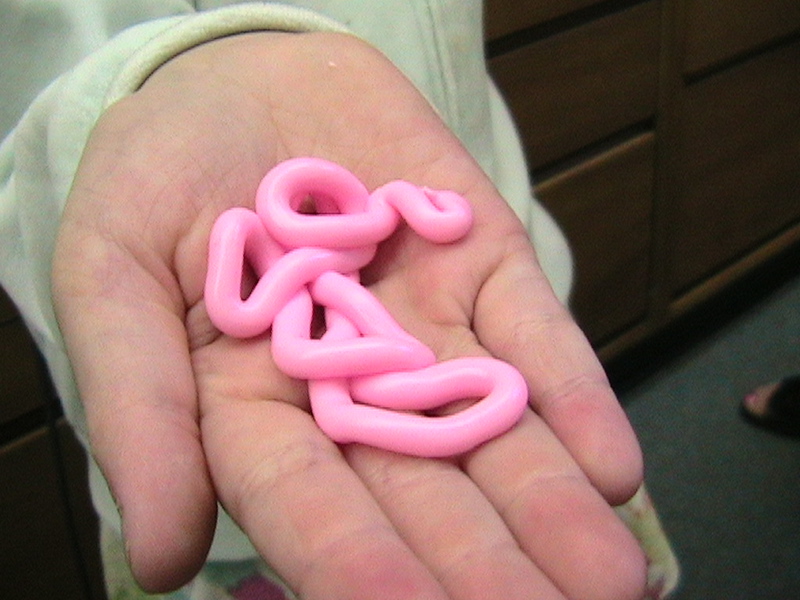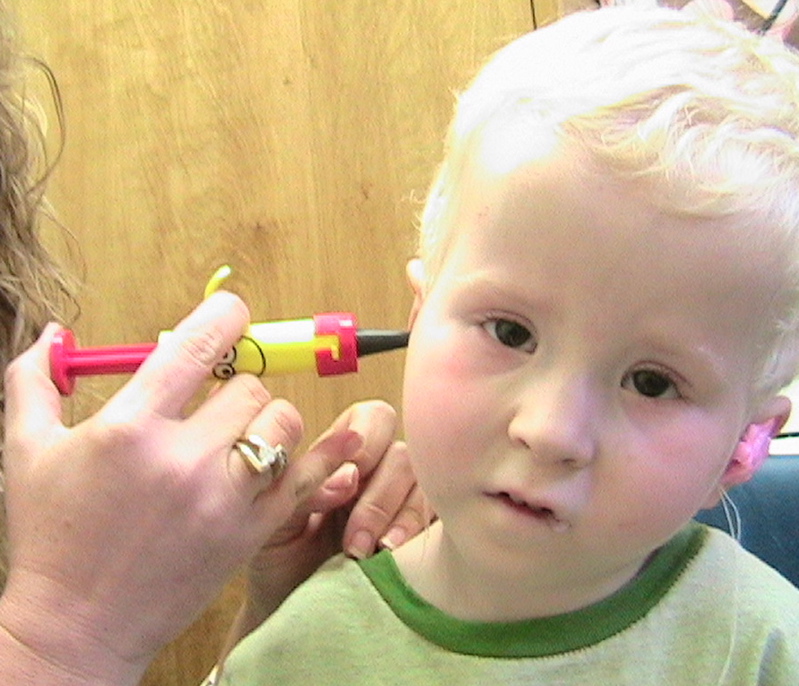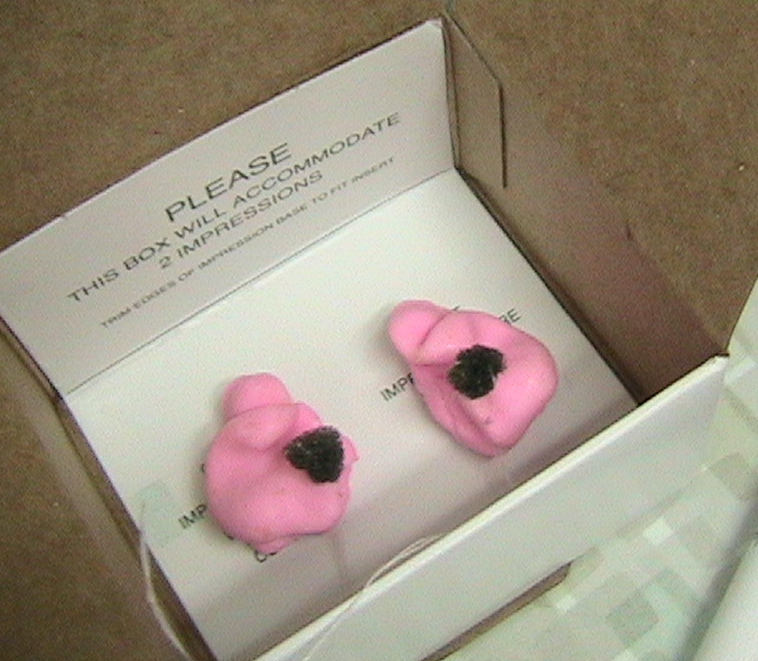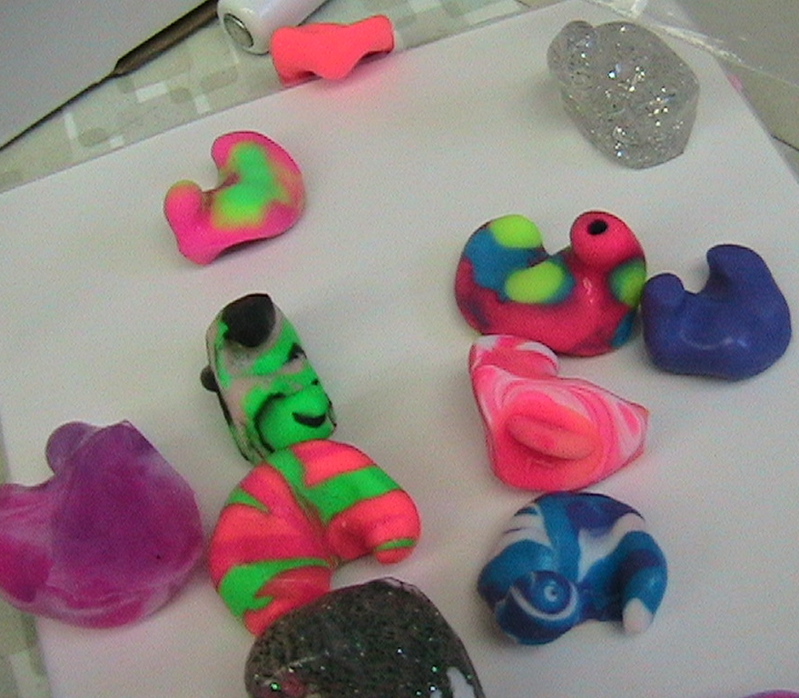Fun With Audiology: Making Ear Molds
Did you know that ears are one of the few body parts that never stop growing? I think noses might be the other. Besides hair and fingernails, obviously.
When you wear behind-the-ear hearing aids, the hearing aids last for years, but the ear molds—the little custom-made silicone or acrylic doohickeys that fits into your ear—need replacing every so often. As your ear grows, the ear mold ceases to fit, and first you get a feedback problem, and then eventually the mold just won’t stay in the ear at all.
So you go to the audiologist’s office, and she makes new impressions of your ears with a quick-hardening goo. You ship the impressions off to a lab, and in a couple of weeks you’ll have your brand new ear molds.
If you are three years old, you may find this process somewhat entertaining, if mildly uncomfortable. If you are six years old and the uncomfortable part is happening to your brother, not to you, you will consider it a ripping good time. Beanie pronounced it “huge fun.”
I get a large number of hits every day from hearing-aid-related searches, including variations of “toddler ear molds,” so I thought it might be helpful if I posted a walk-through of the process. Besides, pictures are always fun.
First the audiologist checks your ears, making sure there isn’t too much wax in there—that might mess up the shape of the impression. Then she carefully inserts a little foam stopper to make sure none of the impression goo goes too far up the ear canal.
Then she pops the two kinds of goo out of their little bubble wrappers, and she mixes them together into a pliable substance that can be squeezed out of a syringe but will harden within a few minutes. Beanie, supervising, thought this mixing process looked pretty nifty and is now wondering how to work “become an audiologist” into her plan to be a scuba-diver with ten children.
The audiologist scoops the goo into the syringe and carefully squeezes it into the ear, sort of like making an icing rose on a birthday cake. Now you have to sit and wait. You can’t poke at the goo, much as you might wish to. Nor can you pull on the string that is connected to the little foam stopper inside your ear canal. Patience, grasshopper.
Meanwhile, the audiologist squirts the leftover goo out of the syringe. This, I am told, is THE BEST PART.
Let’s do the other ear while we’re waiting. It’s okay to drool.
Finished! Time to pull out the impression. No need to be suspicious; it won’t bite.
The impressions go into a box and are dispatched to the Lab, that mysterious place where ear molds are born.
Now comes the fun part! (The other fun part, says Beanie.) What color ear molds do you want? The sky’s the limit. No, Bean, your brother isn’t getting the sparkles.
What color did he get? You’ll have to wait two weeks to find out.

